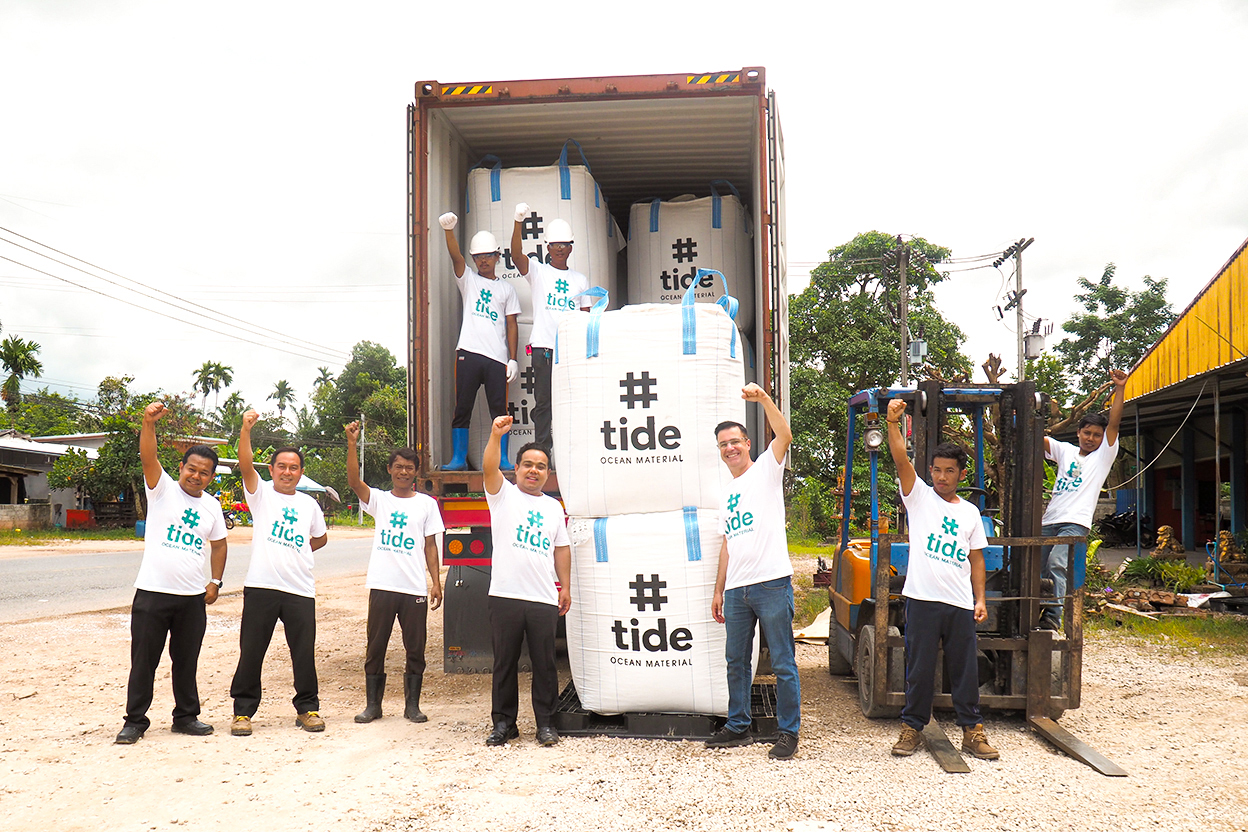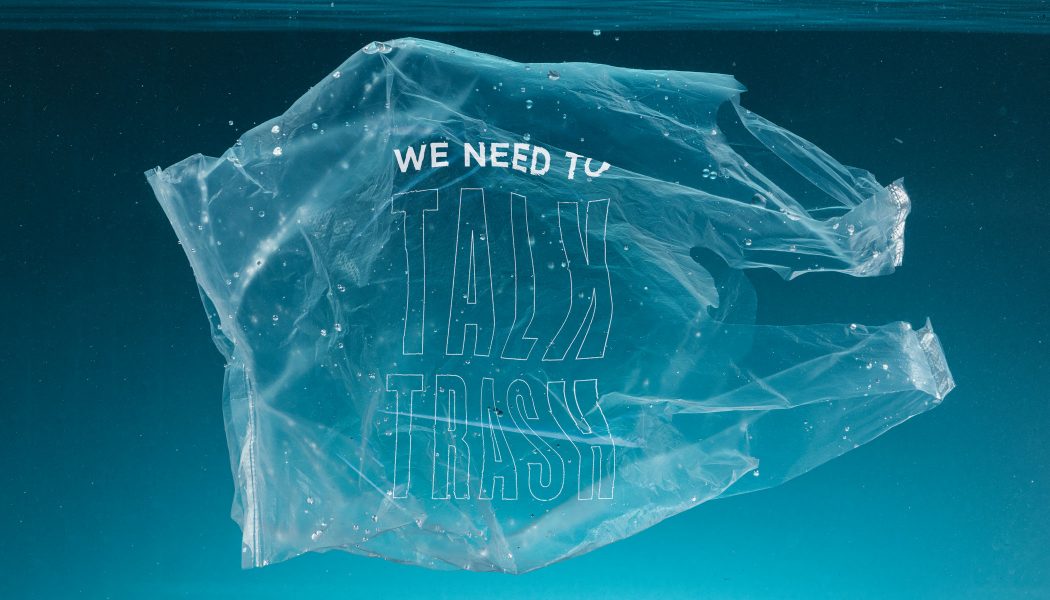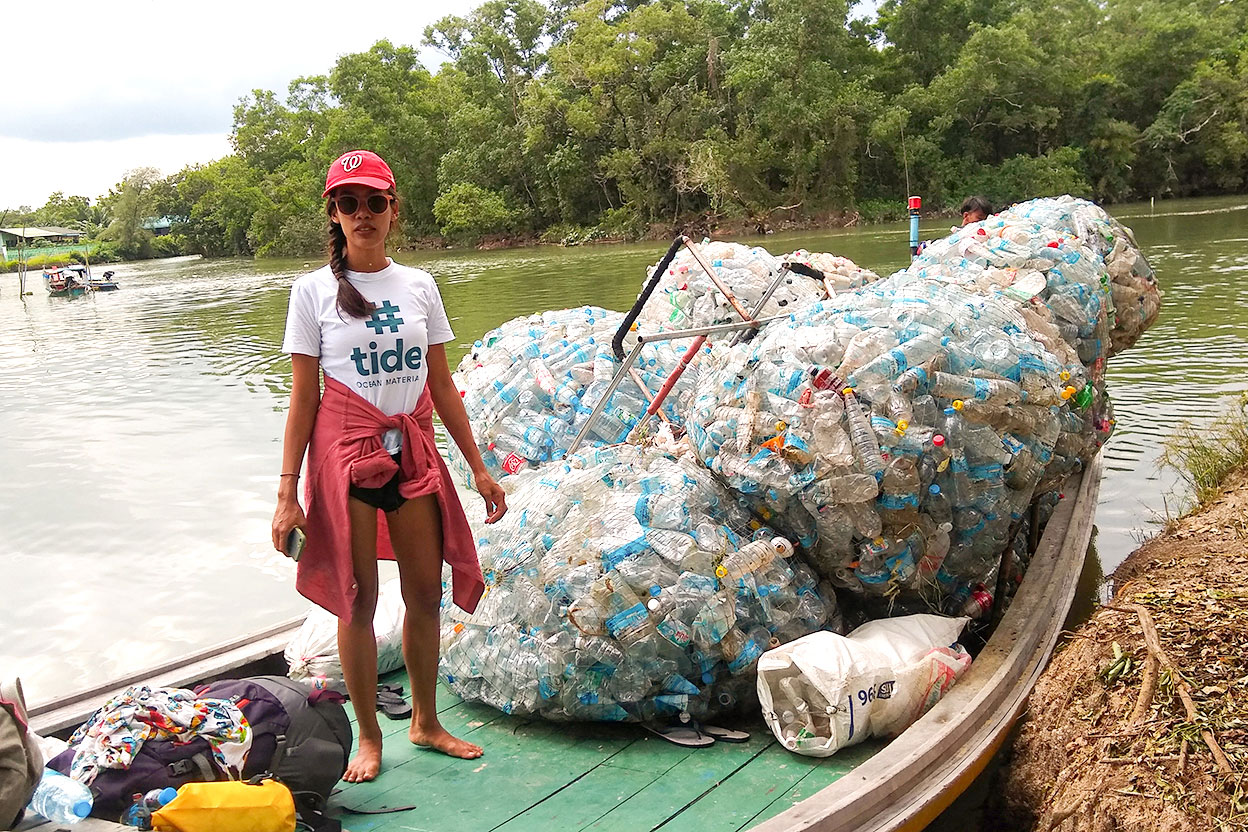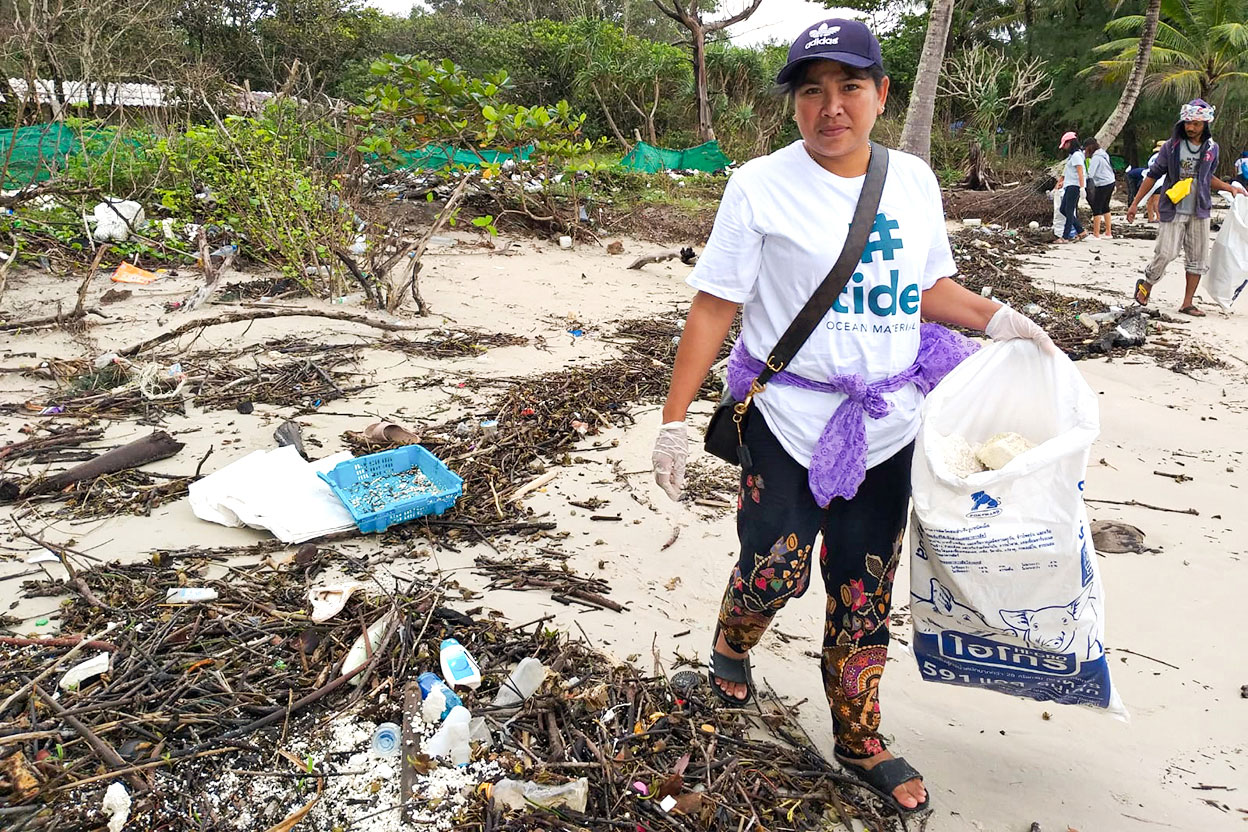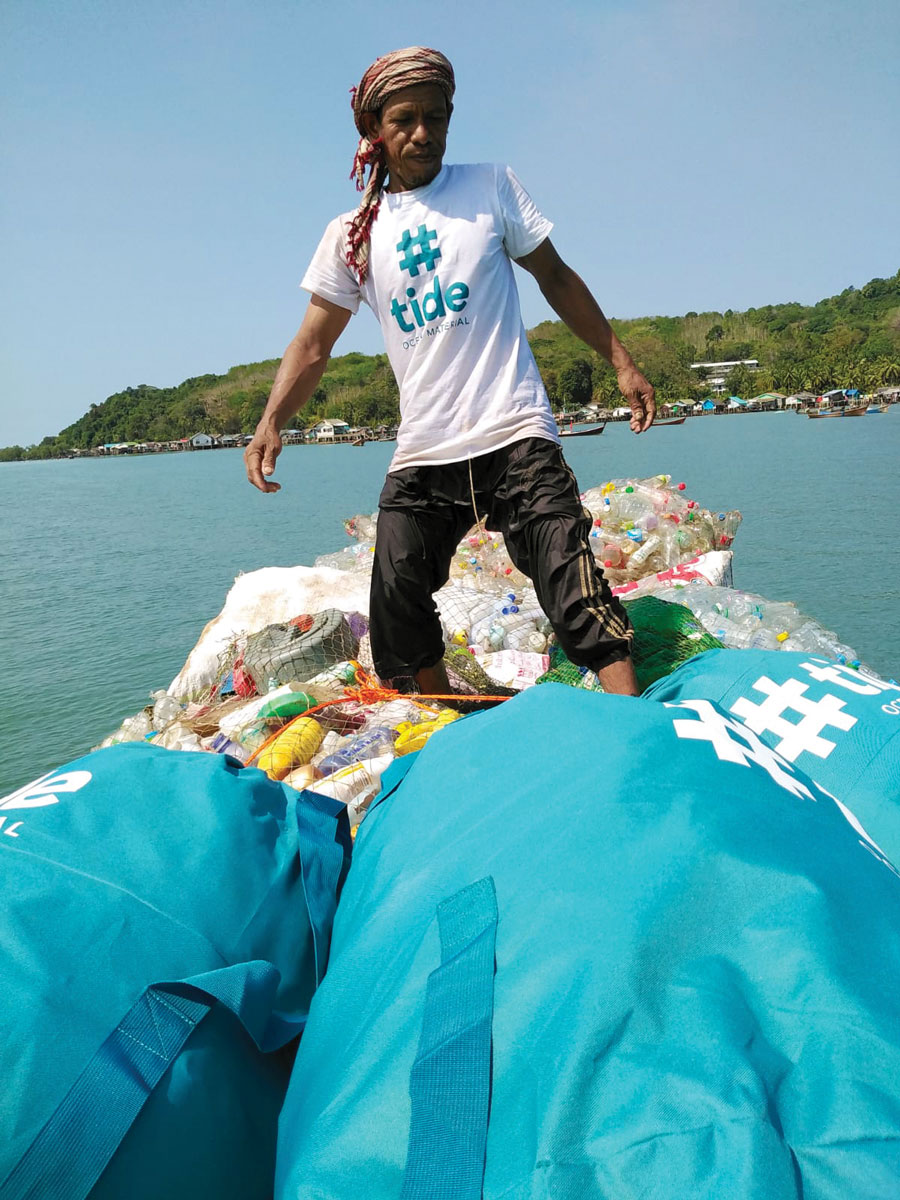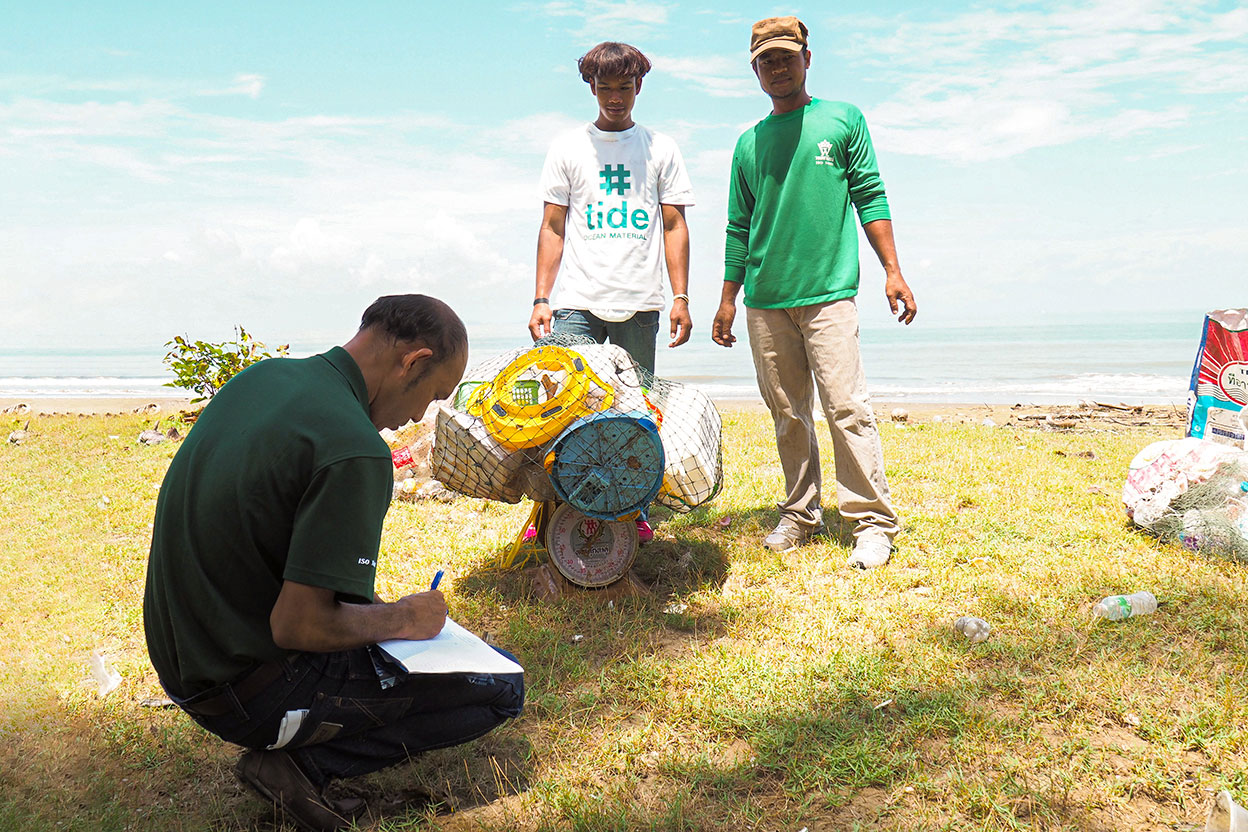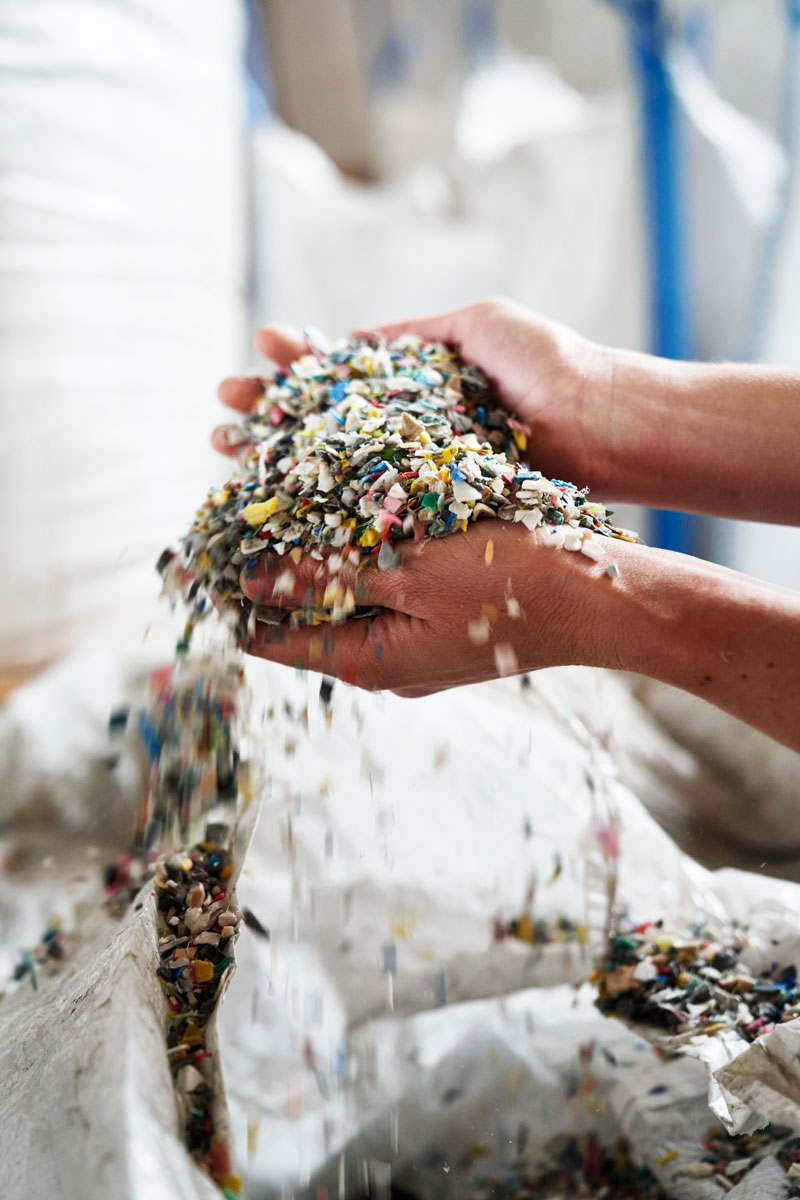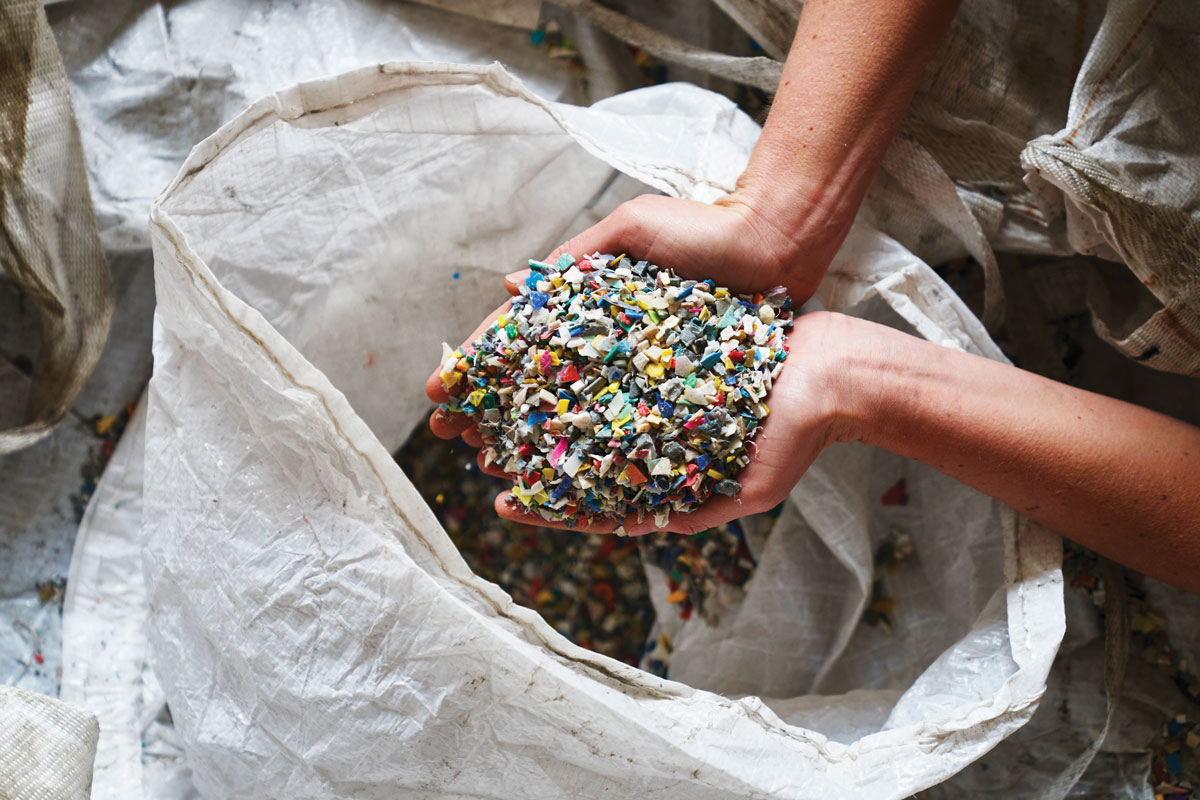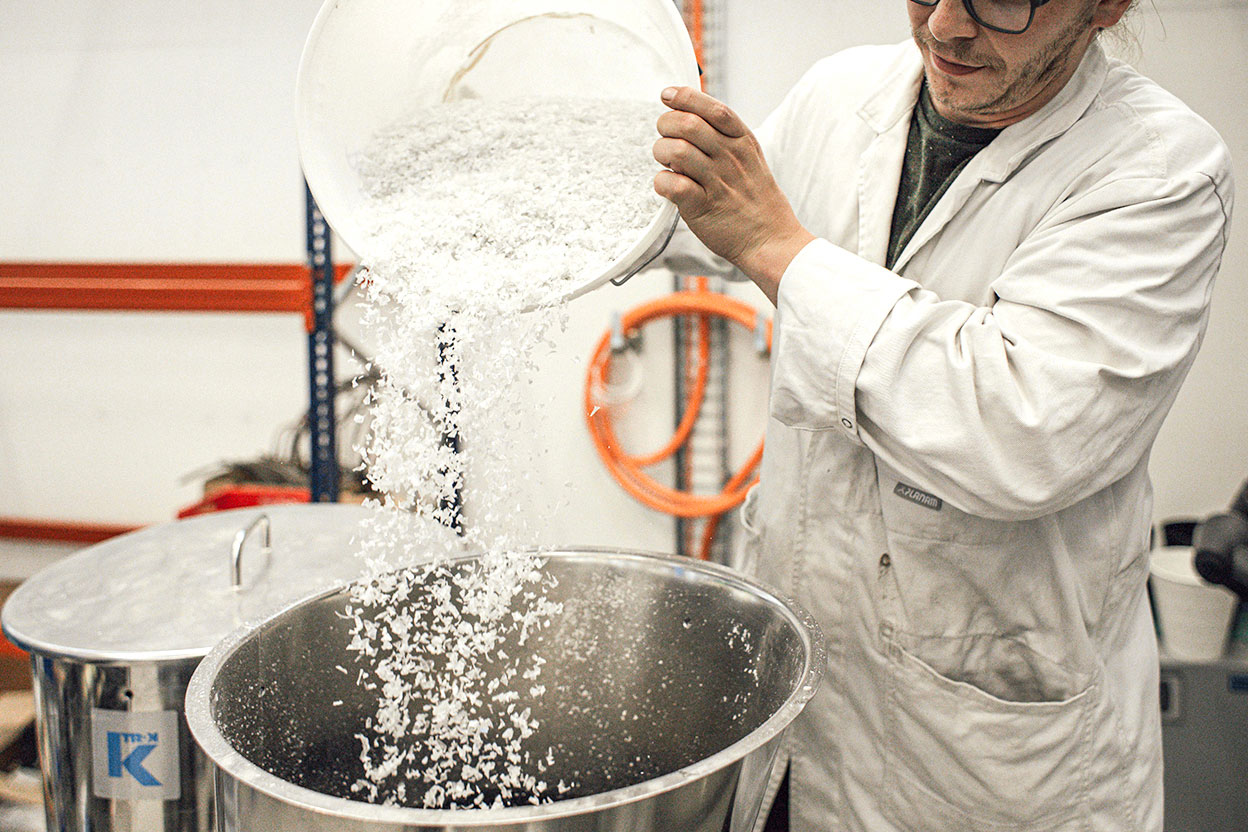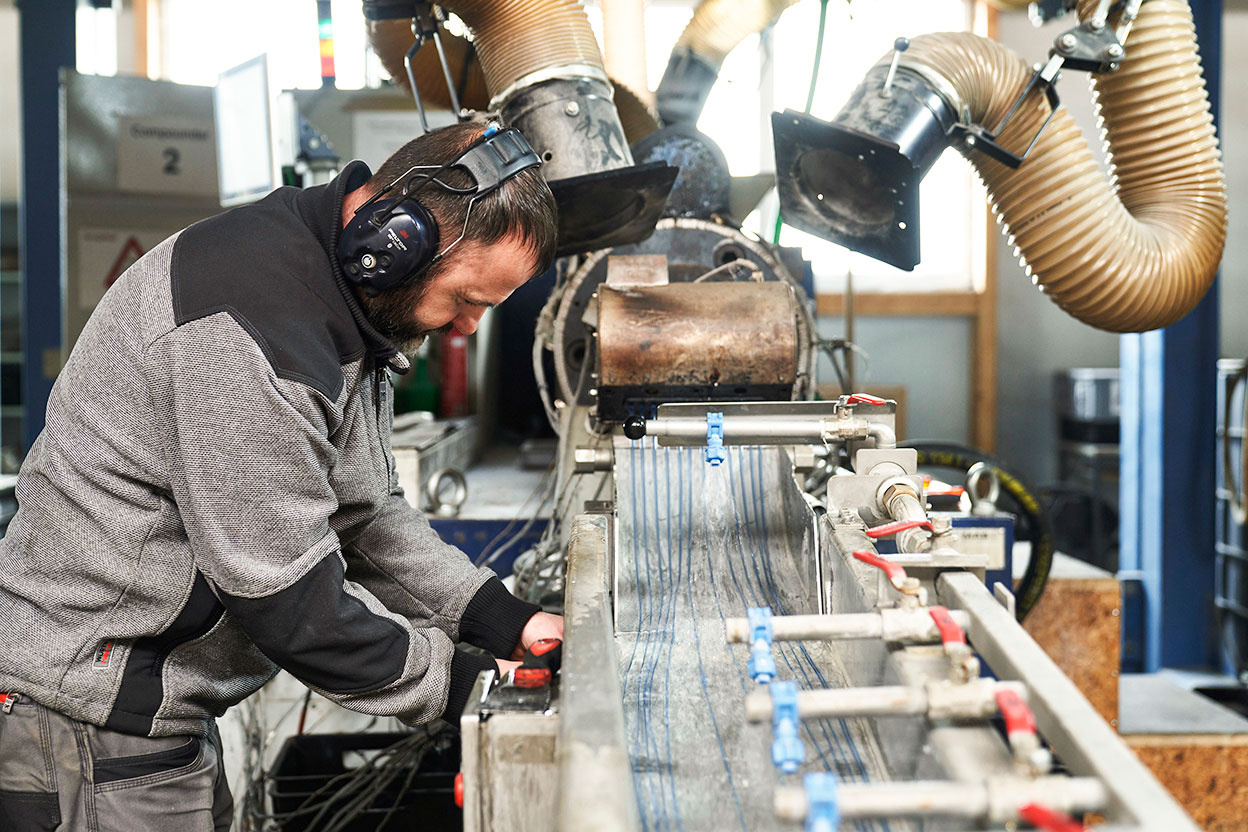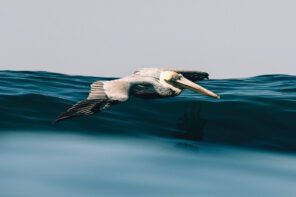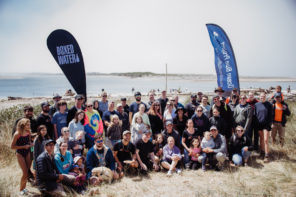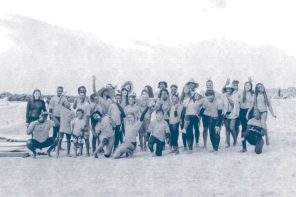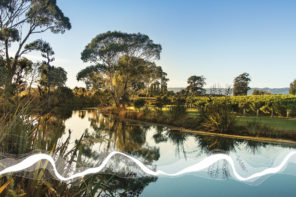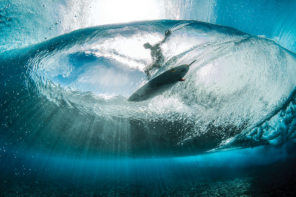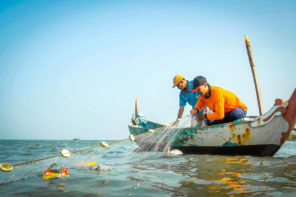#Tide Ocean Material wants to clean our ocean using garbage
One man’s trash etc, etc. You’re likely familiar with that old saying. No doubt you’ve been hearing
a lot about microplastics and their strangling impact on the environment—with some of the most dire evidence washing up on our shores, floating at the surface, forming a man-made trash barge, or sitting in the bellies of all of our beloved ocean friends. The key to turning the tide is giving the one thing people care the least about an appropriate value. Don’t worry, we’re not about to ask you to give the band Creed another chance, but #Tide Ocean SA’s cofounder Marc Krebs would like you to care about trash.
“[A] misconception is that it’s trash and it’s not worth processing it again, but it is worth it. Because if we don’t give it value, nobody cares about it, and then the whole environment suffers and there will be no more fishing in 30 years,” Marc says. “So we really have to find a solution.”
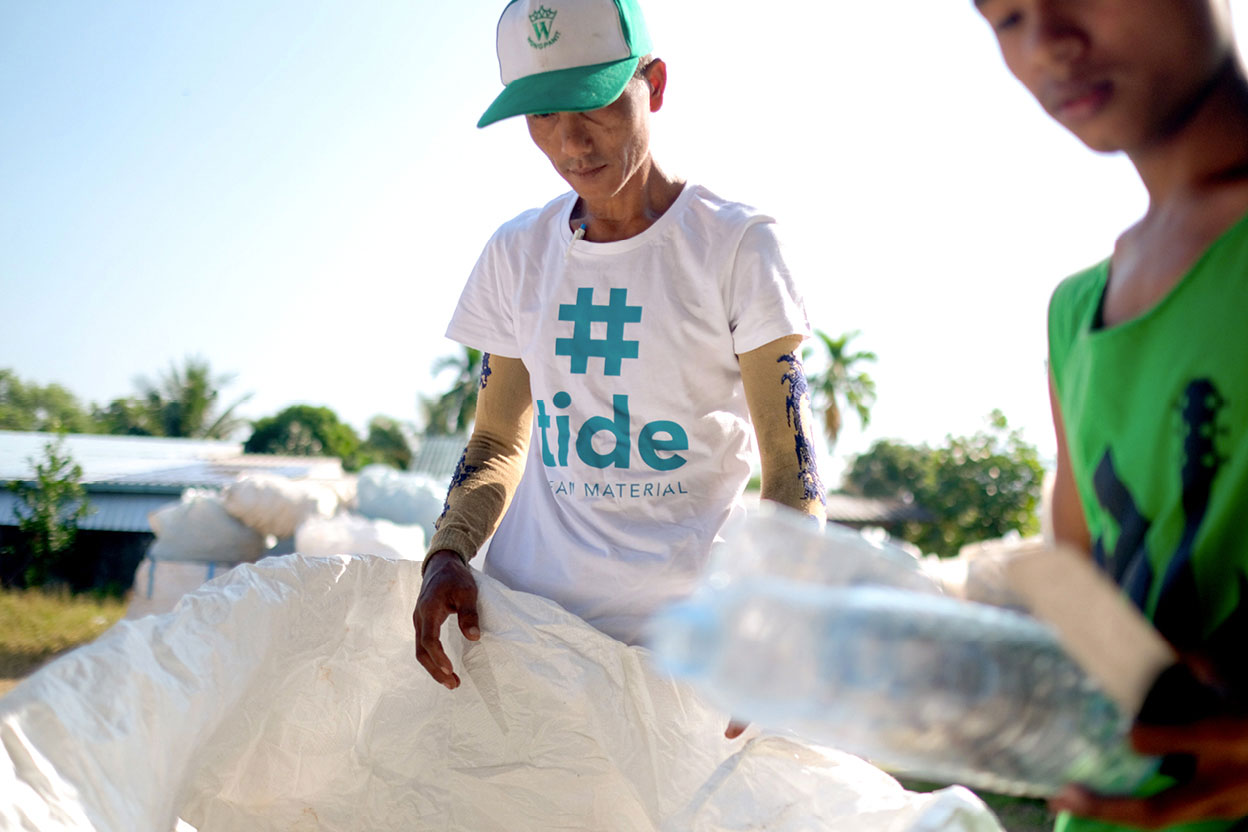
What is #Tide Ocean Material
#Tide Ocean SA is a company based in Basel, Switzerland, originally connected to the Swiss watchmaking industry through its mother company Braloba Group, a world-leading manufacturer of watch straps. It all started when Thomas Schori, an innovative entrepreneur, began to wonder, “Is it possible to take plastic, upcycle it, and turn it into a durable product like a watch strap?” A thought that had not crossed another’s mind or led to enough motivation to act on it. Not until now. Combine that with the knowledge of Professor Daniel Schwendemann and the two brainiacs discovered the problem of upcycling ocean plastics: its brittleness. UV rays, the sand, the saltwater — the open ocean is no joke. But Thomas and Daniel found a mechanical method to upcycle ocean plastics and called on Marc Krebs. A journalist for 25 years, Marc came to the company with skills as an effective communicator and storyteller. “If we want to sell waste, we have to convince people that this is of quality and not just trash.” Then the three amigos founded #tide ocean material®, which has now become a recognized brand for ocean plastic and for its award-winning upcycling program.
You may be thinking, “Switzerland? But it’s landlocked.”
That’s where Swiss technology comes in. #Tide Ocean is based in Switzerland because of the upcycling technology, machinery and scientific knowledge. Located in a country of neutrality, the goal is to become a global network—a first subsidiary in Thailand is just the beginning, others in Asia and Africa are in the planning.
“I think this is not an issue one country or one small population can solve. It’s something that we have to start somewhere and try to change it, but we cannot be naïve. We know that it takes all the big countries and the big industries too if we want to battle climate change.”
We know plastic in the ocean is bad, but why is it bad for the ocean?
First of all, it doesn’t belong there, along with a large number of other materials that make their way to the oceans, but you probably (and hopefully) knew that. Plastics are dangerous because they become microplastics and their lifespan in the water is borderline infinite. They get eaten by animals and can strangle sea life. Then we see Great Garbage Patches of trash so huge the ocean can’t breathe anymore. The ocean is pretty damn important for the health of the climate as a whole. These plastics affect far more than just sea creatures.
What’s the upcycling process for ocean-bound plastics?
“More complicated than creating new plastics: The goal is to keep what already exists and regenerate the single-use plastic that should’ve never been produced in the first place and transform it into a raw material for safe and durable goods.”
Well, what are ocean-bound plastics?
Ocean-bound plastics are plastics that are close to the ocean before and/or after they end up in the water. Any waste found along the coastline, beaches, mangrove forests, villages, the list goes on depending where you are. A lot of this plastic comes within inflows during rainy seasons from uncontrolled landfills. As the monsoons pour, the plastics become an avalanche leading to the sea. It’s just as important to collect the plastic on its way into the ocean as it is to collect the plastics that have already been at sea.
There can’t be one solution, the issue is much too big. It needs to be several solutions, and we’re proud that we are one part of it.
And how is it upcycled?
The people behind the process:
It starts with the Moken people and a Swiss foundation founded to help these local people after the 2004 tsunami. The Moken people are sea nomads without a known country off the islands of Southeast Asia. Fishermen that have lived off the sea for centuries. And, as you could guess, plastics have started to impede their way of life. The foundation trains them to collect the plastic, helping to avoid floating islands of waste. So by giving this trash value, it provides opportunities for the local people to earn fair wages. With their income from fishing being jeopardized, #tide ocean material‰ can step in and pay them for trash collection and convince the people that the process is worth it.
“We know it’s not their fault, that there’s trash from all around the world gathering in Southeast, Asia. So, I understand that they somehow think, ‘Well, why should we pick up all the world’s trash?’”
The Process:
Back to high-tech Switzerland. This is where the mechanical and physical adaptations made by Thomas and Daniel come into play. The right pressure, the right heat and the right filters. After sorting and washing, these machines create granules that can be compounded and extruded to become yarn in a later state.
The Final Result
A raw material that is almost identical to the quality of virgin plastic, but it’s been recycled. And that’s the upcycling process. What started as trash is now used to produce a Shinola watch or a Tom Ford watch. Even high-quality car parts. Not a shabby upgrade.
Keep it in the cycle, rather than producing something new.
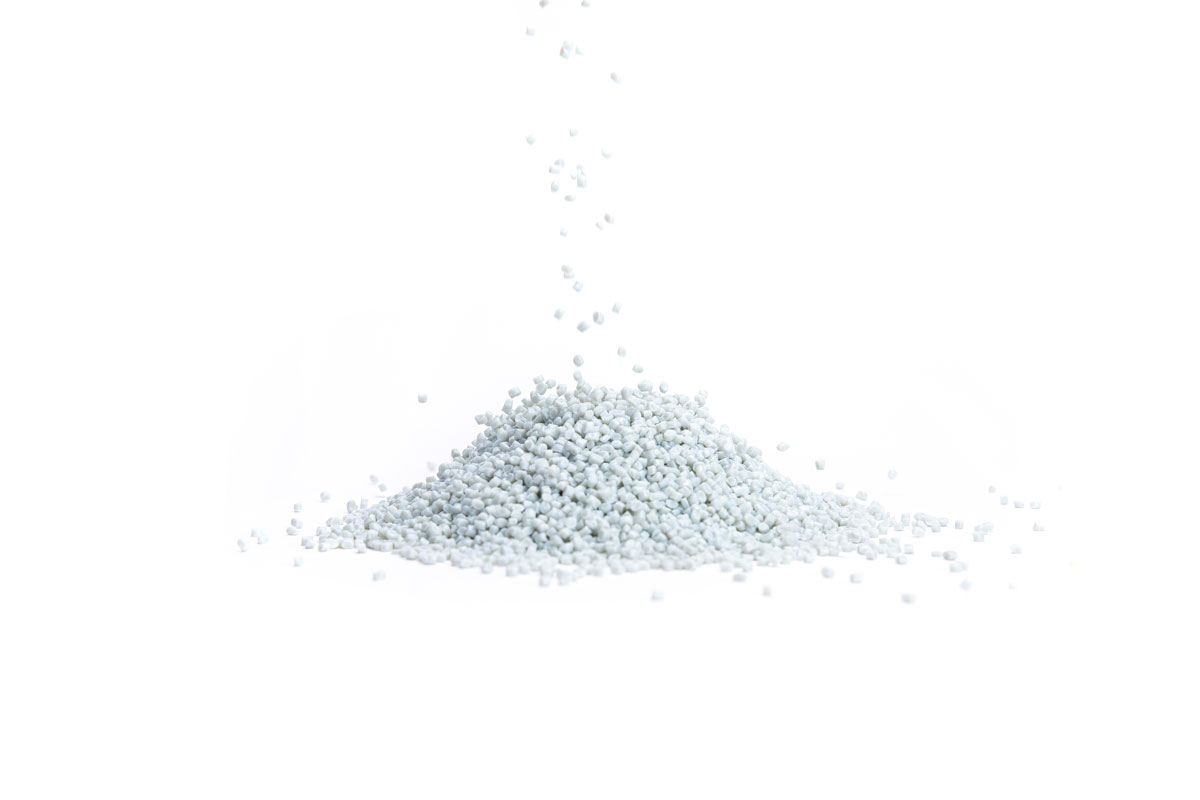
What can you do?
Say no to plastic bags.
The world goes through 500 billion plastic bags per year. A single plastic bag is used for 15 minutes on average, but its lifetime is 22 million times longer than its use. That’s over 625 years floating in the oceans. And that’s just for one bag.
Get yourself a nice reusable water bottle.
You’ve got a lot of options out there to choose from. The process of bottling water requires six times more water than what you actually get in the water bottle. Seems a little backward, doesn’t it? Plastic beverage containers contribute to 14% of all litter. Not including the caps or labels.
Be diligent about where your waste is going.
Globally, over 100 billion disposable coffee cups are sold every year, but almost none are recycled. Not even the lids. Only 9% of all plastic is recycled, and 40% of all plastic is used for packaging, most of which is immediately discarded.
Be a good human.
Pick up waste when you see it, be responsible and don’t litter. That’s for trashy people.
